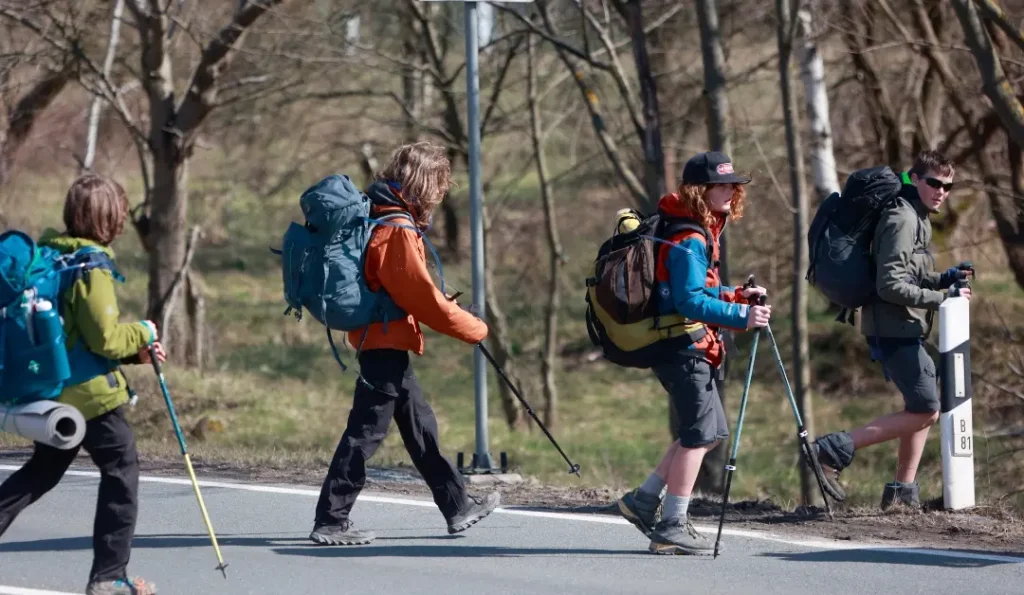A lot of attention has been paid to the Bluefire Wilderness case, which has brought up many concerns regarding the methods and workings of this wilderness rehabilitation program.Additionally, Bluefire Wilderness Lawsuit is a therapy program that combines outdoor activities with therapeutic interventions to help troublesome youths. The program’s participants are guaranteed a life-changing experience. But grave accusations from past participants and their families sparked a widely reported lawsuit, raising questions about the security and honesty of these kinds of initiatives.
Bluefire Wilderness Therapy
An outdoor adventure program called Bluefire Wilderness Therapy uses a mix of therapy, adventure activities, and wilderness experiences to help disturbed teens and young adults.Furthermore,the program objectives are to advance emotional healing, self-awareness, and personal development. Under the guidance of qualified experts, participants take part in team-building exercises, hiking, and camping.
Purpose and Benefits
Bluefire Wilderness Therapy’s main objective is to offer a therapeutic setting that promotes constructive behavioral changes. The software has a number of advantages, such as:
Personal Development
Participants learn essential life skills, such as communication, teamwork, and problem-solving.
Emotional Healing
The natural setting allows individuals to disconnect from daily stressors and focus on emotional well-being.
Physical Health
Outdoor activities promote physical fitness and overall health.
Academic Support
Some programs incorporate academic elements to help participants stay on track with their education.
Origins of the Bluefire Wilderness Lawsuit
The claims of abuse and carelessness in the program led to the lawsuit against Bluefire Wilderness. The organization has come under fire from former members and their families for allegedly failing to create a secure and encouraging atmosphere. The main accusations consist of:
Negligence
Claims of inadequate supervision and failure to address medical needs.
Emotional Distress
Allegations of emotional and psychological harm inflicted by staff members.
False Advertising
Accusations that the program did not deliver the promised therapeutic benefits.
Legal Implications and Proceedings
The legal proceedings surrounding the Bluefire Wilderness lawsuit have been complex and multifaceted. Key legal implications include:
Class Action Status
The lawsuit has the potential to become a class-action case, involving multiple plaintiffs with similar grievances.
Regulatory Scrutiny
The case has attracted the attention of regulatory bodies, leading to increased scrutiny of wilderness therapy programs.
Financial Impact
Bluefire Wilderness faces potential financial liabilities, including compensation for damages and legal fees.
Broader Impact on the Wilderness Therapy Industry
The litigation against Bluefire Wilderness holds wider consequences for the wilderness therapy sector in its entirety. The case has spurred discussion over the rules and guidelines that control these kinds of initiatives. Important topics of conversation include:
Safety Standards
The need for stringent safety protocols to ensure the well-being of participants.
Staff Training
How crucial it is to select and train competent employees who can offer sufficient guidance and assistance.
Transparency
The need for openness in program descriptions and marketing to avoid making false claims.
Response from Bluefire Wilderness
In response to the lawsuit, Bluefire Wilderness has taken several steps to address the allegations and improve its practices. These actions include:
Policy Revisions
Implementing new policies and procedures to enhance participant safety and program effectiveness.
Staff Training
Increasing the focus on staff training and development to ensure high standards of care.
Communication
Enhancing communication with participants and their families to provide better support and transparency.
Moving Forward: Lessons and Reforms
The Bluefire Wilderness lawsuit serves as a critical learning opportunity for the wilderness therapy industry. Moving forward, it is essential to:
Adopt Best Practices
Embrace best practices and evidence-based approaches to ensure the effectiveness and safety of therapy programs.
Enhance Regulations
Advocate for stronger regulations and oversight to protect participants and maintain high standards.
Foster Accountability
Promote accountability and ethical conduct among program providers to build trust and credibility.
FAQs
1. What is the Bluefire Wilderness lawsuit about?
The lawsuit involves allegations of negligence, emotional distress, and false advertising against the Bluefire Wilderness Therapy program.
2. Who filed the lawsuit against Bluefire Wilderness?
The lawsuit was filed by former participants and their families who claim they were mistreated and misled by the program.
3. What are the potential outcomes of the lawsuit?
Potential outcomes include financial compensation for plaintiffs, regulatory reforms, and increased scrutiny of wilderness therapy programs.
4. How has Bluefire Wilderness responded to the allegations?
Bluefire Wilderness has revised its policies also increased staff training, and improved communication with participants and their families.
5. What impact has the lawsuit had on the wilderness therapy industry?
The lawsuit has highlighted the need for better safety standards, staff training, and transparency within the industry.
6. What steps can wilderness therapy programs take to prevent similar issues?
Programs can adopt best practices, enhance regulations, and promote accountability to ensure participant safety and program effectiveness.
7. Are wilderness therapy programs safe?
While many programs are safe and effective, the Bluefire Wilderness lawsuit underscores the importance of choosing reputable providers with high standards.
8. How can families choose a reliable wilderness therapy program?
Families should research programs thoroughly also ask about safety protocols, staff qualifications, and program outcomes, and seek recommendations from trusted sources.
Conclusion
The case concerning Bluefire Wilderness has brought to light serious issues regarding the procedures and requirements of wilderness therapy programs. Moreover, stakeholders can strive toward significant adjustments by comprehending the case’s history, ramifications, and wider effects on the sector.However, ensuring participants’ safety and well-being is of utmost importance, and the insights gained from this case can contribute to the development of a more open, responsible, and successful wilderness treatment setting.



